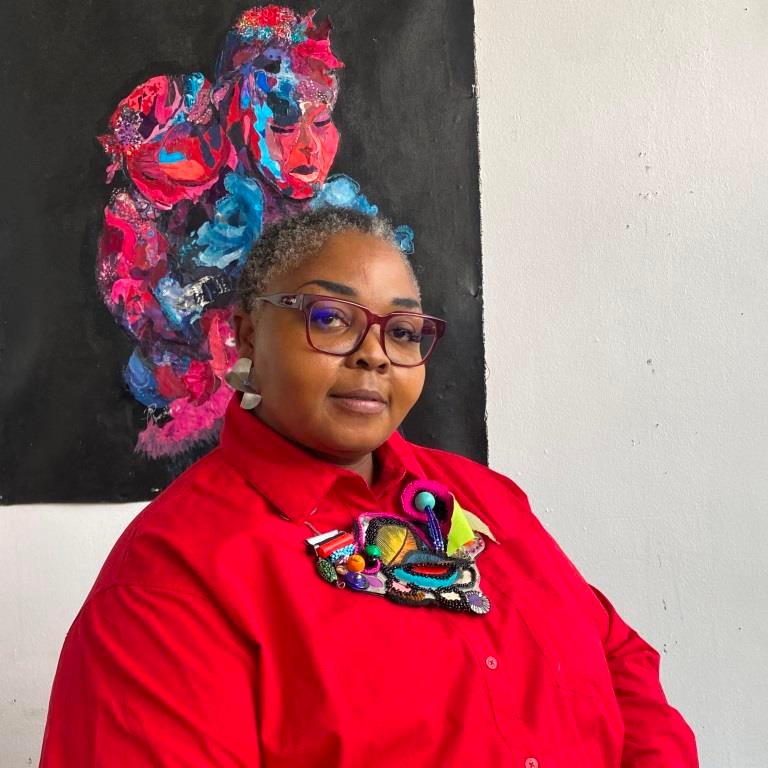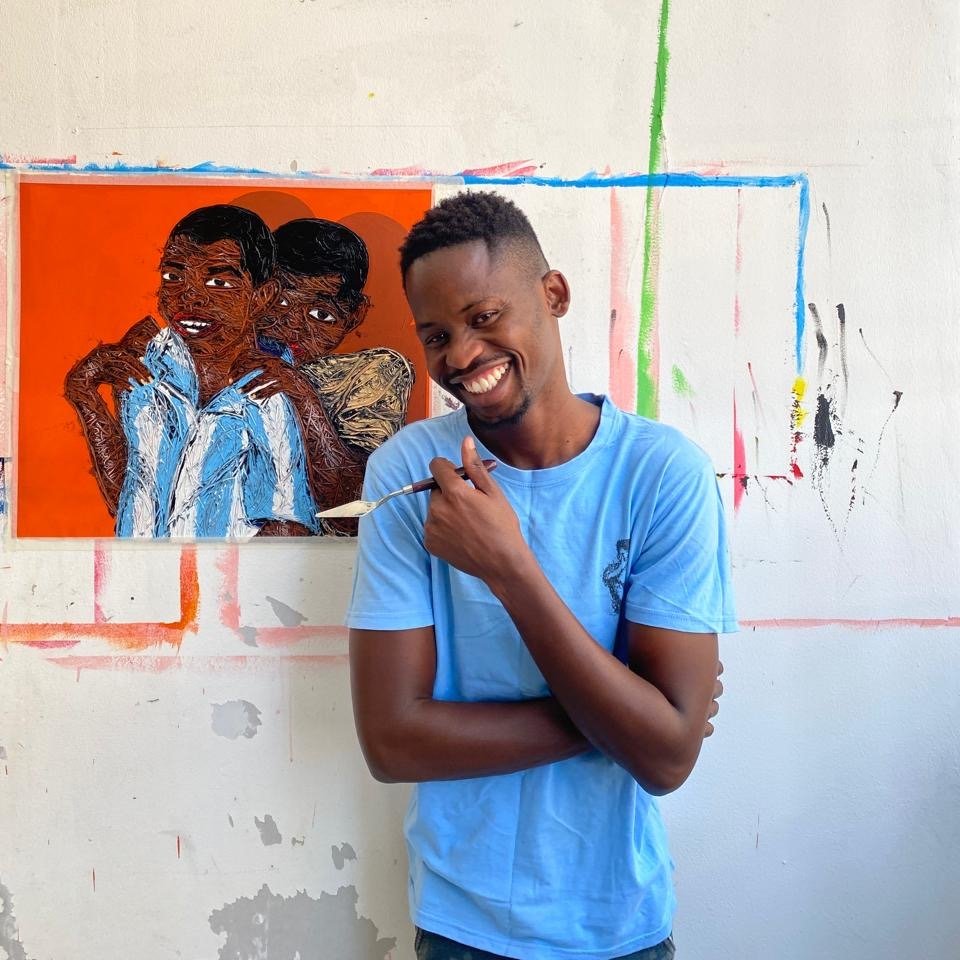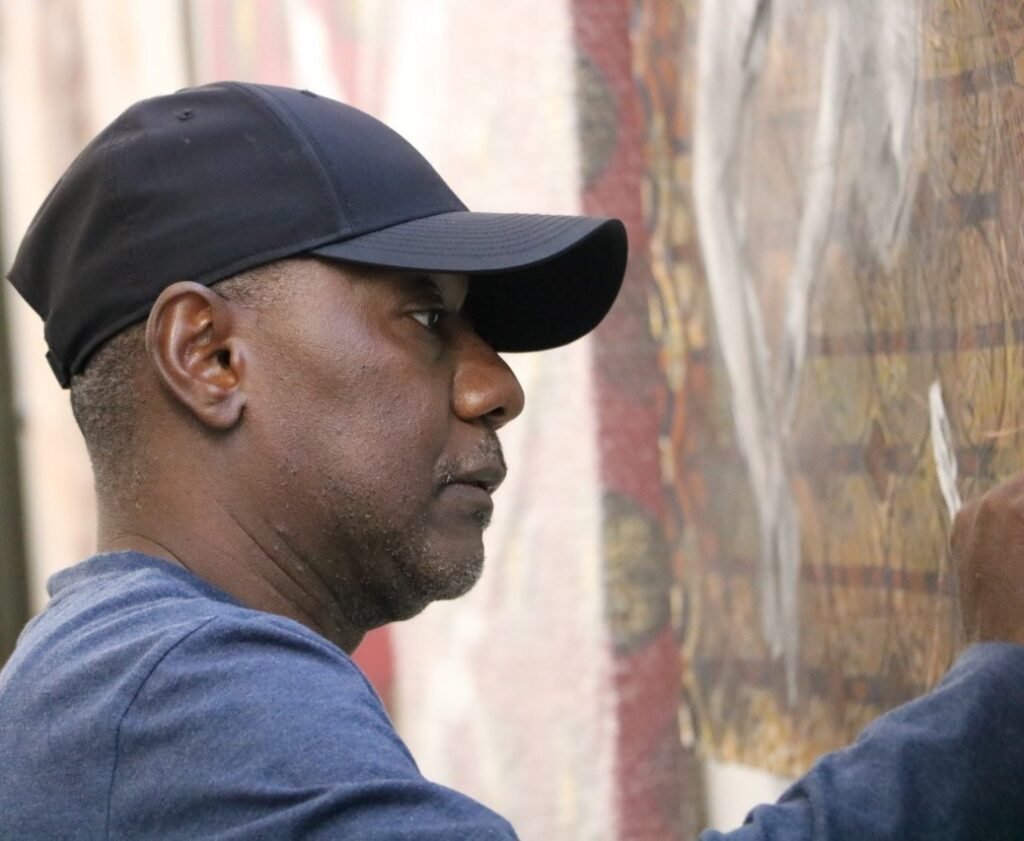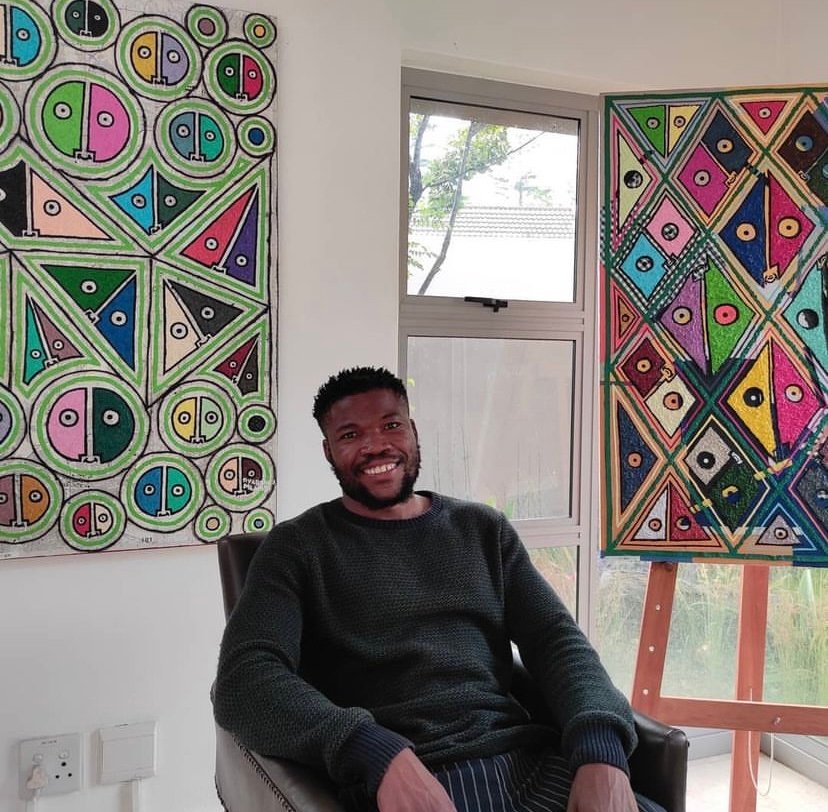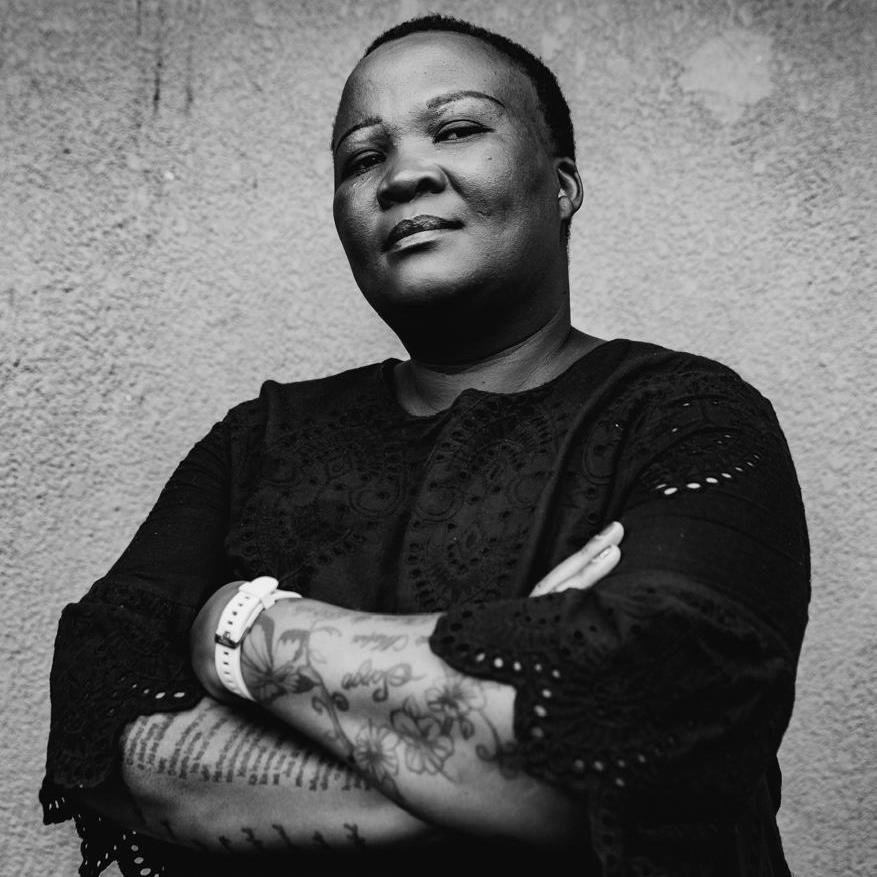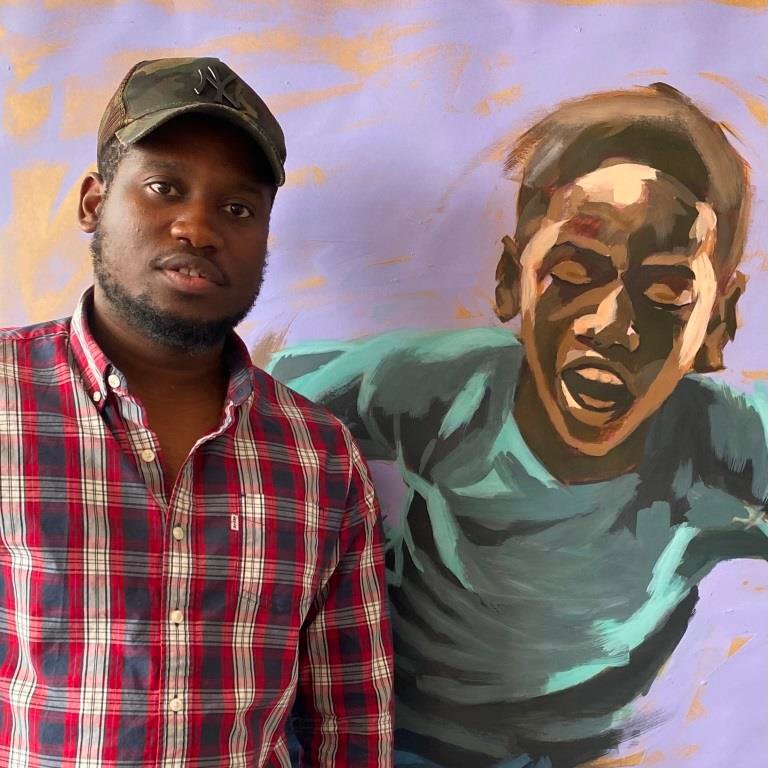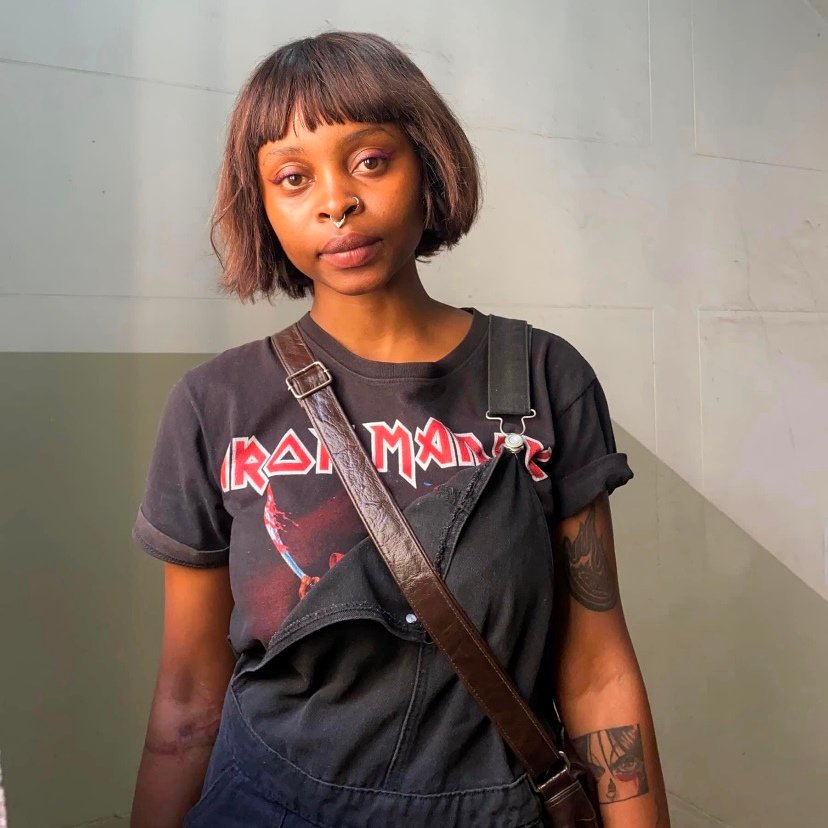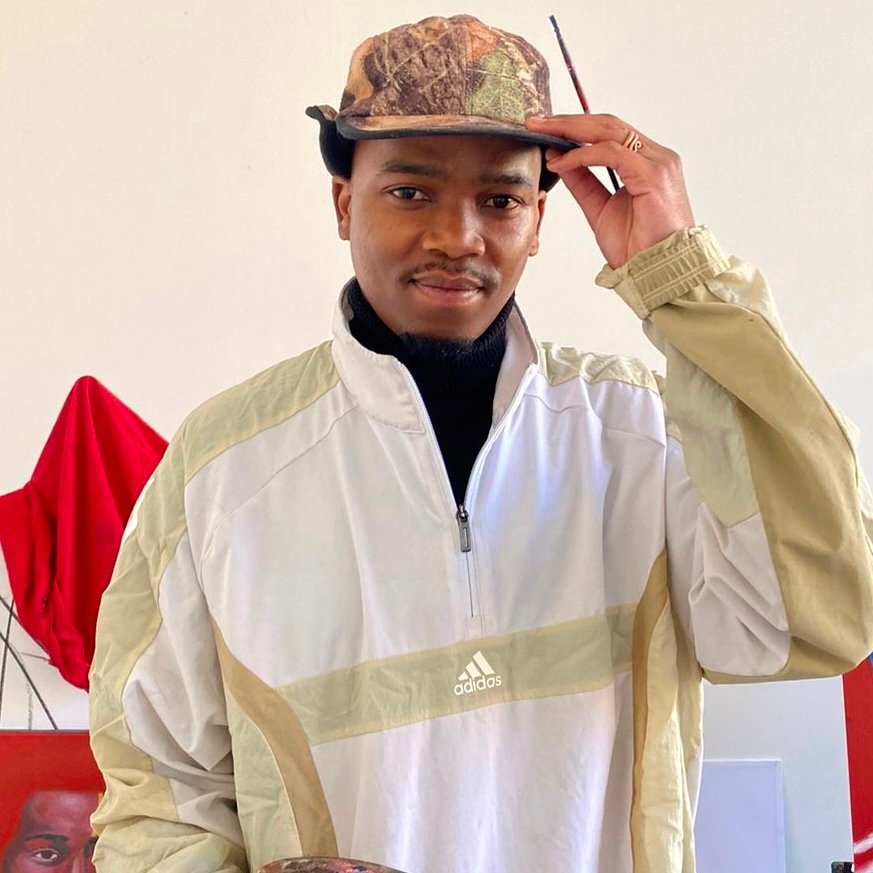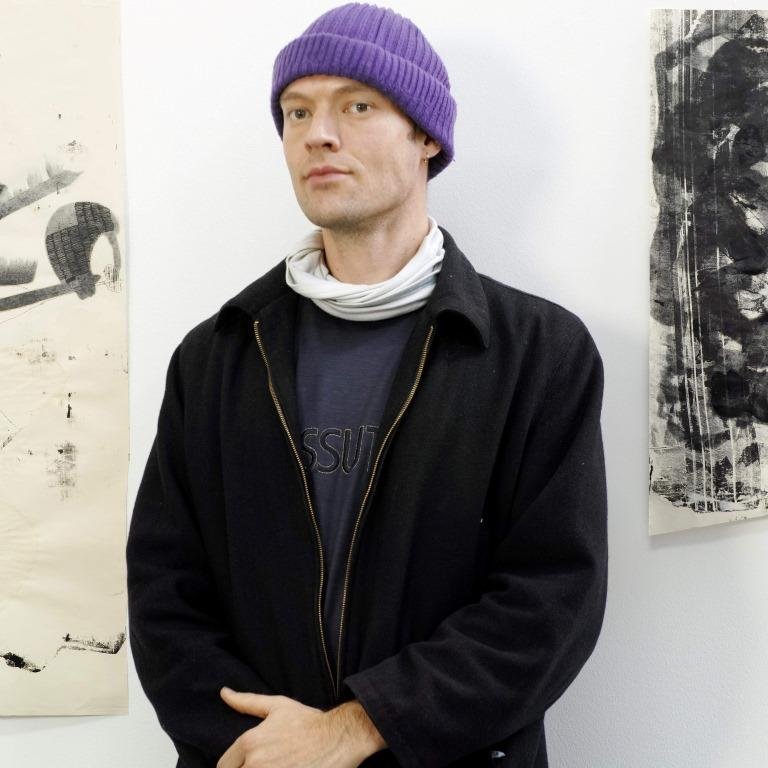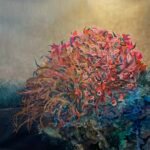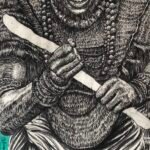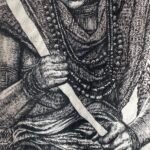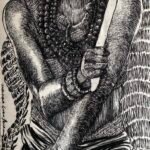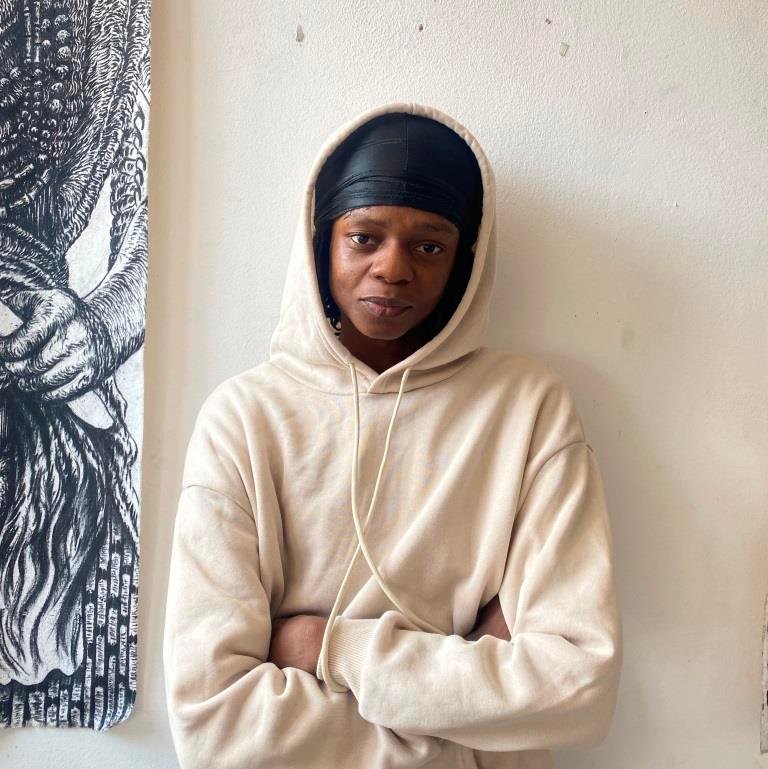
Given Muronga
Introduction
Given Muronga, a multidisciplinary artist from Saulsville, a township located on the western edge of Phelindaba, South Africa, has developed a unique and powerful artistic voice that draws from his deep-rooted experiences in the townships and his upbringing in the Limpopo province. His work is a testament to the resilience of African identity, the pursuit of cultural preservation, and the rejection of the dislocation that has often characterized African life under colonial and post-colonial circumstances. With a childhood shaped by the nurturing power of art and a strong connection to the land, Muronga’s art is both a personal and collective reflection of African history, identity, and the complexity of the modern African experience.
Muronga’s art speaks not only to his own journey but also to the shared experience of African people who navigate a world where their identity is often contested, fragmented, and misunderstood. His practice is influenced by African maximalism, a style that embraces bold, detailed, and vibrant expressions of culture, identity, and history. Using various mediums, including charcoal, wood, and line drawing, Muronga captures the essence of African spirituality, family, and the collective memory of his people. His work is a response to the erasure of African traditions and cultural representations in the broader global narrative and aims to restore the integrity of African identity.
Early Life: A Refuge Through Art
Given Muronga’s relationship with art began in childhood, it was not initially driven by a desire to become an artist but rather as a means of survival and protection. Growing up in Sausville, Pretoria West, and later in Limpopo, Muronga was exposed to the dangers and challenges that many children in townships face. The streets were filled with distractions and perilous elements that could easily lead a young person astray. Recognizing his son’s natural curiosity, Muronga’s mother used art to keep him engaged, focused, and safe from the dangers of the streets. She understood that art could be a tool not just for creativity, but also for personal development, giving her son an outlet to express himself while keeping him out of harm’s way.
In this environment, art became Muronga’s refuge, a safe space where he could explore the world and his own identity without fear of the external pressures that many children face in disadvantaged communities. As he immersed himself in art, Muronga discovered a sense of belonging and control over his own narrative. The act of making art was also a form of resistance—a way to carve out space for himself in a world that often seemed indifferent to his identity and his community’s struggles.
The Influence of African Masters
As Muronga’s artistic practice began to mature, he found inspiration in a range of African artists whose work resonated with his own journey. Among his major influences are the legendary South African artists George Pemba, Dumile Feni, Thami Mnyele, Blessings Ngobeni and Vladimir Tretchikoff. These artists, who came from various corners of Africa, are known for their powerful representations of African identity, culture, and social struggles. What drew Muronga to them was their ability to communicate complex ideas about African life and identity through the visual language of art.
Each of these artists, in their own way, used their craft to explore themes of freedom, empowerment, and cultural preservation. Muronga is particularly drawn to the way these artists engaged with African identity in a global context—how they challenged stereotypes, told their own stories, and rejected the notion that African culture should be subordinated or erased in favour of Western norms. Their work demonstrated the transformative power of art and its ability to document history, capture emotion, and resist the dominant cultural narratives that have sought to marginalize African people.
In addition to these iconic artists, Muronga’s work is heavily influenced by the rich visual culture of his home country. Growing up in Limpopo, he was exposed to a variety of traditional African art forms, including beadwork, textiles, wood carving, and the intricate mark-making associated with Khoisan art. The connection to mark-making in his work is particularly important, as it speaks to his desire to capture the essence of his African heritage through a distinctive visual language. The marks he creates in his work are not arbitrary; they are deeply symbolic and rooted in the cultural practices of his ancestors.
Music and Its Impact on His Art
Muronga’s passion for music is an essential part of his artistic identity. Music is not merely an influence on his work; it is a driving force behind his creativity. Muronga has a broad appreciation for music, ranging from the soulful rhythms of Nigerian British singer Sade to the Afrobeat sounds of Fela Kuti, and even contemporary artists like Kendrick Lamar. What unites these artists for Muronga is their ability to break down complex ideas and emotions through their craft. Like a musician who carefully constructs and deconstructs a song, Muronga approaches his art with the same attention to detail and energy. He listens to music that he can “break apart,” finding deeper meanings in every note and rhythm. This process of deconstruction mirrors his approach to creating art—he loves the challenge of working with multiple layers, textures, and concepts to bring an idea to life.
Muronga is also inspired by the music videos of artists like Tyler, The Creator, who is known for his ability to weave visual storytelling with music in innovative and unexpected ways. This fusion of sound and visual art speaks to Muronga’s belief in the power of multimedia to express complex ideas. For him, art is not confined to one medium—it is an ever-evolving expression of culture, emotion, and identity, and the influence of music is central to that ongoing exploration.
African Maximalism: Identity and Culture
One of the most prominent themes in Muronga’s work is African maximalism, a style that celebrates the vibrancy, richness, and complexity of African culture. Using African regalia, textiles, and references to African history, Muronga’s art is a celebration of African identity in all its facets. His use of bright colors, intricate patterns, and detailed mark-making reflects his belief that African culture should not be watered down or simplified. Rather, it should be celebrated in all its fullness, complexity, and beauty.
Muronga takes issue with the idea that African culture and identity should be documented or presented in a manner that is palatable or easily digestible for a global audience. He is critical of the historical tendency to reduce African art to mere representations of poverty or suffering, ignoring the richness of its traditions and the strength of its people. In his view, African art must resist this simplification and instead assert its place in the global conversation as a powerful and transformative form of expression.
Through his work, Muronga seeks to document and preserve the essence of African identity, not as it is defined by the West, but as it is understood and lived by the people who are part of that culture. He uses his art as a medium to record and store African identity, ensuring that future generations will have access to a visual history that speaks to their own lived experiences.
The Influence of the Khoisan and Ernest Cole
Muronga’s work is also deeply informed by the history and culture of the Khoisan people, the indigenous people of southern Africa. He is particularly influenced by the Khoisan’s use of mark-making, which often carries spiritual and cultural significance. The way the Khoisan depicted their early lives, spiritual experiences, and connection to the land is something that Muronga strives to capture in his own practice. His use of line and texture, as well as his attention to the spiritual and emotional aspects of his subjects, reflect this deep connection to the Khoisan traditions.
In addition, Muronga draws inspiration from the work of Ernest Cole, a South African photographer whose iconic images of apartheid-era life captured the suffering and resilience of the African people. One of the most significant aspects of Cole’s work was his portrayal of the clenched fist—a symbol of resistance and the struggle for freedom. Muronga resonates with this imagery and uses it as a visual reference in his own work, particularly in relation to the theme of ideological freedom. For Muronga, freedom is not just a political ideal but a deeply personal one, tied to the ability to express and define oneself on one’s own terms.
Charcoal: Immortalizing Conversations Around the Fire
Muronga’s use of charcoal in his work is highly symbolic. Charcoal not only serves as a medium for drawing but also carries personal significance. It reminds him of his grandmother, who passed away some years ago. Growing up in the village, Muronga would go to the mountain to gather hard wood, which was then dried and used to make fire. The fire was a source of warmth, a place where the family would come together to share stories, wisdom, and traditions. After the fire had died down, the charcoal remained as a residue of these intimate, communal moments. For Muronga, charcoal symbolizes not only the physical warmth of the fire but also the deeper, spiritual warmth of family and tradition.
By using charcoal to create his drawings, Muronga feels that he is immortalizing the conversations and connections that occurred around the fire—the exchange of ideas, the preservation of culture, and the passing down of knowledge from one generation to the next. The figures he draws with charcoal are not just representations of people; they are his family members, his siblings, and the people who shared those moments with him. Each mark made with charcoal is a tribute to the family, the land, and the cultural practices that shaped him.
The Future: A Growing Influence
Muronga is optimistic about the future of African art. He believes that the world is becoming more open to African ideas and expressions, and that African art will continue to grow in influence and visibility on the global stage. He sees a future in which African art is recognized not just for its aesthetic value, but also for its cultural and historical significance. He envisions a world where African ornaments, artifacts, and traditions that were once stolen or overlooked will be returned to
On Auction
-
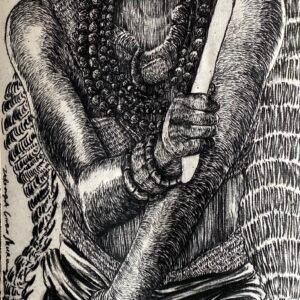 Strong kids mother gave birth to 12Auction Expired
Strong kids mother gave birth to 12Auction Expired -
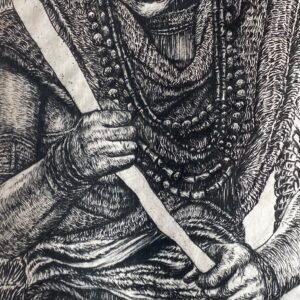 Story kids mother gave birth to 10Auction Expired
Story kids mother gave birth to 10Auction Expired -
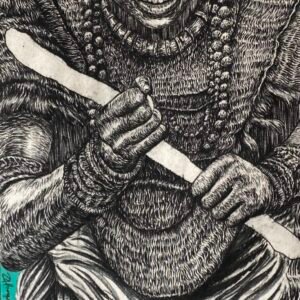 Strong kids mother gave birth to 9Auction Expired
Strong kids mother gave birth to 9Auction Expired -
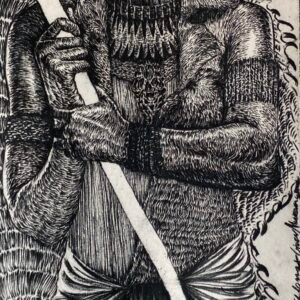 Strong kids mother gave birth to 11Auction Expired
Strong kids mother gave birth to 11Auction Expired

